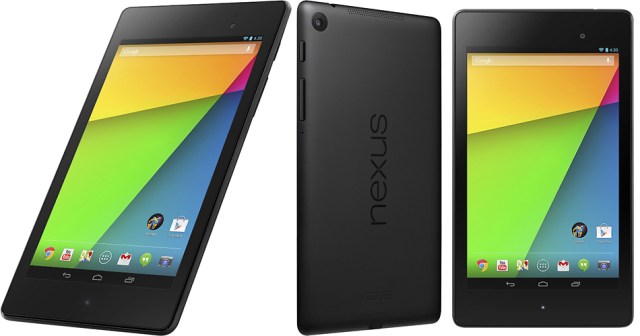Monday, September 23, 2013
A Viable Mobile Work Platform: Google Nexus 7 32GB (2013) Tablet Review
I tend to use my desktop for five main activities: Web surfing, writing, drawing, watching video, and playing games. My MacBook Air (2011) serves as a mobile solution for the first four of those activities, but it is arguably a weaker mobile platform than an instant-on tablet. My first foray into the tablet market was a Samsung Galaxy Tab 7.0 Plus, a mouthful of a tablet that was a solid device for web surfing and limited video - it lacked the power to display anime with soft subtitles, as the subtitle encoding tended to make it stutter. Despite its limitations, I knew it was probably only a matter of time before an Android tablet packed the kind of processing power to make short work of mkv files with subs.
On the other hand, the main problem I had with handling word processing on a tablet was that three of the core functions that an editor / legal writer requires were not supported on any apps at the time: redlines (or track changes), in-line comments, and foot/endnotes. The first two are the main substance of my freelance work, while legal scholarship relies heavily on notes. My solution for working on the go was a long-discontinued UMID mBook BZ handheld computer. It suffered from the same start up and battery life issues that most laptops do in the field, but it was the most mobile option available that allowed me to work with the features that I need to on a daily basis. Given my reliance on the BZ, I delayed updating my smartphone (an HTC Thunderbolt) and tablet until a viable alternative presented itself
Around the time that the 2013 Nexus 7 was released, I did a survey of new Android apps to see if any of them could now handle those three critical features. I found one that did in Office 2012: TextMaker Mobile, which could handle all three with ease. This was the inciting incident that led me to upgrade to an HTC One (along with the unit's eventual addition to Verizon's roster) and this year's Nexus 7. Both feature screens with resolutions rivaling my desktop's 24" monitors (with the Nexus 7's matching them at 1920 x 1200), and snappy quad-core processors that I've confirmed are fast enough to handle subtitled mkv files. Understandably, the user interface on both is snappy and a breath of fresh air after living with the often laggy response times of the Thunderbolt and Tab 7.0 Plus, both of which seemed to be struggling to keep up after their respective updates to 4.0 ICS.
The 2013 Nexus 7 is a mature tablet platform that has effectively replaced my aging handheld PC as my mobile work solution. Now, the only work task that requires the MacBook Air is illustration, though with Wacom's self-contained Cintiq tablets on the horizon, it may only be a matter of time before there is a mobile computing solution with all of the features of a full desktop setup.
Subscribe to:
Post Comments (Atom)


No comments:
Post a Comment